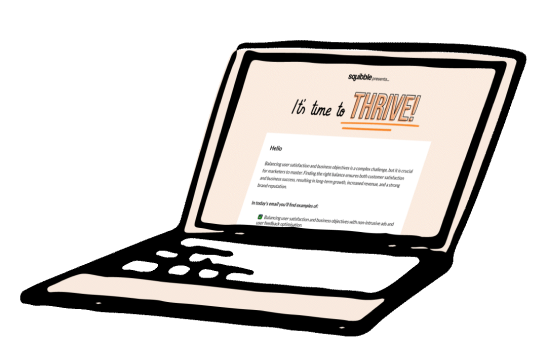Bad website design is confused web design – and we all know a muddled webpage when we see one. Our grandmothers might have told us that, if we’ve nothing nice to say, we should say nothing at all; but the truth is we can learn from the negative – it teaches us what to avoid.
The principles of good web design are fairly simple and standardised: usability, functionality, attractiveness and appropriateness. Similarly, although bad websites are bad in a very large variety of ways, it is possible to categorise their failures into broad “what to avoid” groupings.
It’s not that the team at Squibble spends all their time searching for badly designed websites … but we do all need a hobby. Seriously, we think learning from the mistakes of others is a good way of improving the results we achieve for our own clients – drop us a line to hear some horror stories, or just to get down to producing a good design instead.
Why Website Design Is Important
We’re hoping that, given you’re reading this, we don’t need to evangelise too heavily for web design. This is, after all, a web design blog! But it may not always seem obvious what we mean by “design” – and therefore why we think it’s important. So, if you need them, here’s the Cliff Notes as we see things.
“Web design” isn’t just about how a site looks – in fact, it perhaps isn’t even primarily about aesthetics. Many people make the mistake that “design” is largely about form, but in fact it is about fusing form and function. Good web design makes sure that a site is attractive, sure; but it mostly makes sure that a site’s interface matches its goals, and appeals to its target audience.
In other words, web design makes a site fit for purpose. A good design will lead a user through a sales funnel towards conversion; it will be easy to use and make as few demands on the user as possible; it will grab and hold their attention, and give them access to the content they need. In other words, web design is important because it is the medium through which a business’s customers access their services online.
What Does Bad Design Look Like?
This being the case, what does bad design look like? This depends quite heavily on what a particular site was intended to do – and how it has failed to achieve those ends. Indeed, at its most basic definition, “bad web design” is simply this: a failure to achieve the goals set. Usually, this will have to do with converting users: to contacts, to consumers, to customers. A site that users don’t interact with is probably one that is badly designed.
First and foremost, this often means getting the navigation right. If you land at a website and it’s not immediately obvious what you need to click, or where you need to go to get the content you’re looking for, that’s bad design. Navigation should be clean and intuitive – if it isn’t, that site will lose customers. A nice, crisp layout with orderly navigation is the absolute basic building block of good web design – bad design is its opposite.
Clutter confuses, and it also obscures: a website without clear navigation is also a website without a clear purpose. A site with obvious calls to action is a well-designed site; one that leaves the user marooned is a bad one. Bad design is confused design: busy graphics, complicated typefaces, jumbled links. Fundamentally, bad design looks like a mess.
How To Turn Things Around
The good news is that it is relatively easy to turn bad web design around. If bad web design is obvious because it leads to confused page layouts and confounding navigation, the first step to achieving a good design is to pare things back – and make things simple, for both the designers and the users.
Ask some key questions of your site: What is it for? Who is it for? What journey should a user take when they arrive? Answering these questions will lead you towards an understanding of the key interaction points to which everything about your site should draw a user’s attention. This clarity can then feed through to the design itself.
The next step is to test your assumptions. User experience testing is invaluable: gather feedback on early drafts of your design so that you can correct any of its aspects which don’t quite hit their mark. Good design comes in large part from fulfilling the needs of it the user – so get them involved in your design process.
It really can be that simple: take things back to basics, achieve some clarity and ask for user feedback. After all, it is the opposite you need to watch for: over-complication, confused purpose, user frustration. That’s what makes a bad website design.






